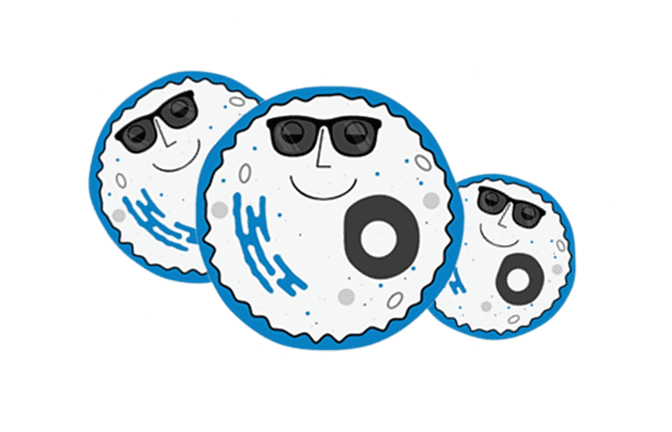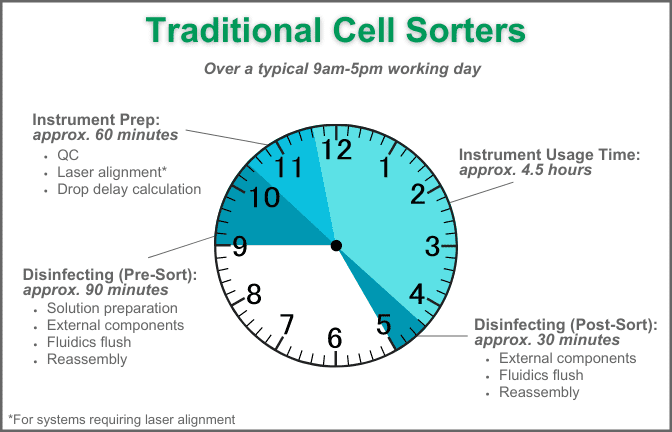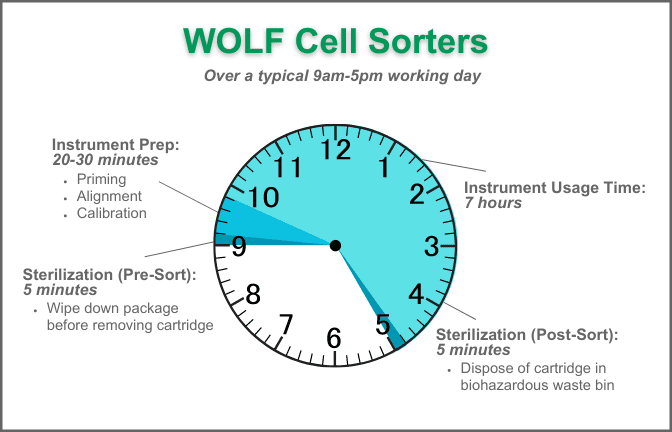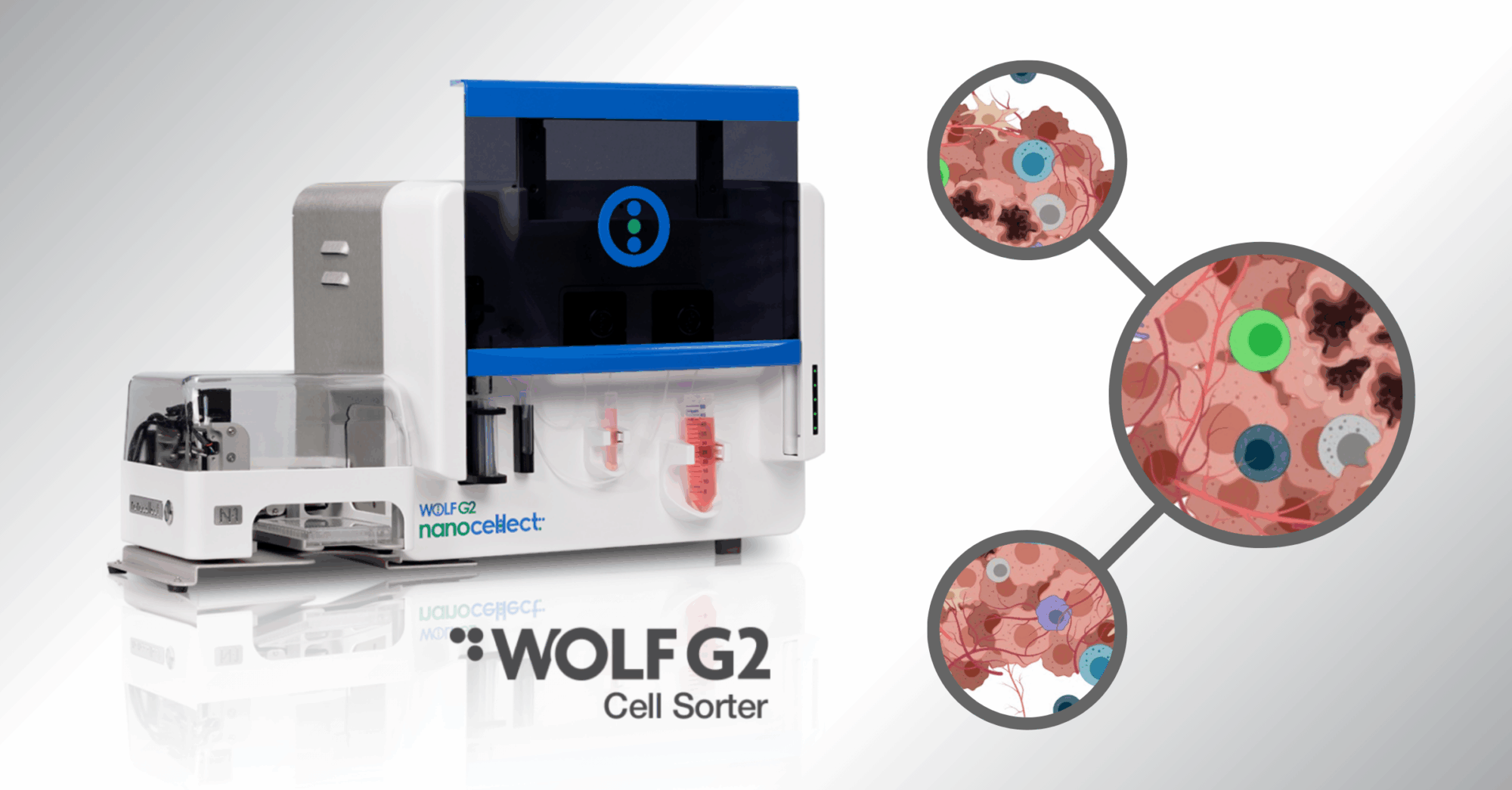What’s So Special About the NanoCellect Microfluidic Cartridge?
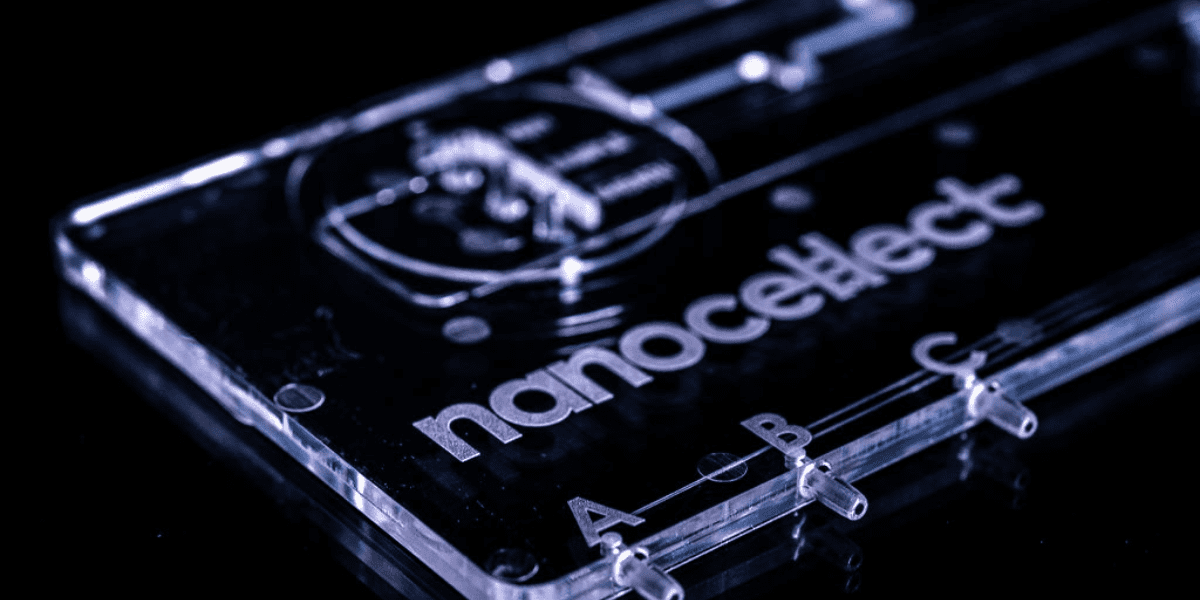
Picture this…
You arrive at the lab on Monday morning. You’re planning to run a sample of tumor microenvironment cells today so you can use them for downstream single-cell genomics analysis. You walk up to your traditional, high-pressure cell sorter, but instead of beginning the two to three-hour process of preparing the instrument for the sorting run, you get to throw away the entire fluidics cart, flow cell, and cell line.
Sounds absurd? Well, it’s possible with the innovative design of the NanoCellect microfluidic cartridge.
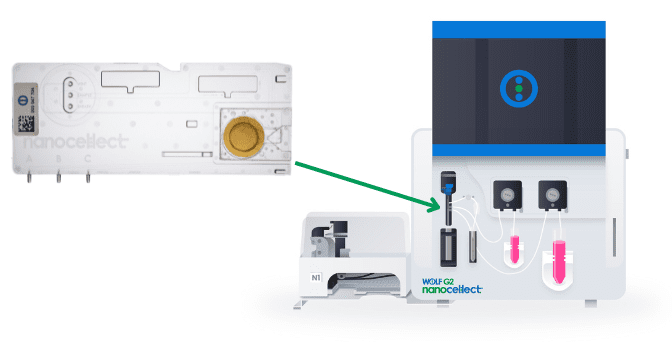
Sterile Cell Sorting
Sterilization steps for traditional sorters can be arduous, involving the sheath and sample paths for all the cell sorter’s tanks and lines. The Sterilization for Sorting section of the Springer Lab Manual consists of an 11-step protocol to complete pre-sort, with an additional four steps after the run is complete.
Even then, you can’t guarantee there won’t be any carryover or contamination. At best, it is an aseptic run. A study published in the Journal of Biomolecular Techniques sought to evaluate cell sorters for the presence of contaminants across multiple lab sites, finding many to be contaminated with endotoxin (even after completing sterilization steps).
Let’s say you are working with hazardous T cells and isolating them to study HIV. The NanoCellect microfluidic cartridge requires zero prep time for a sterile sort. With a fully contained fluidics path, the fluidics never touch the inside of the instrument. Since the cartridges are disposable, there is no chance of sample-to-sample contamination or exposure to biohazardous aerosols. So, after you sort those hazardous T cells? Simply dispose of the cartridge, and you’re ready for another sterile sort of a completely different cell type.
These timelines visualize the simplicity of sterile sorts with a WOLF cell sorter vs. a traditional cell sorter. Over a typical 9:00 AM to 5:00 PM work day, you have fewer steps and 2.5 hours of more instrument usage time.
Maintenance, Simplified
Even if sterility is not a concern, regular maintenance is required with traditional sorters. That takes away from your sorting time and adds labor hours for maintenance and disinfecting. Many require designated experts and/or specific certifications to be allowed to conduct the maintenance, requiring complex and hands-on training. That can add up to a lot of instrument downtime. There is no daily maintenance with the microfluidic cartridge, and anyone in the lab can be trained within one day’s time to use the instrument from start to finish.
Customized Tissue Culture Media
Since fluidics never enter the instrument, there is zero downtime due to fluidics issues (common with traditional sorters). There’s another unique advantage this provides—the option to use alternative sheath fluids to optimize cell conditions, which can be a game changer when sorting sensitive cell types.
Let’s say you need to perform single-cell isolation of gene-edited protoplasts for plant regeneration. The typical PBS buffer that other cell sorters are limited to is not ideal because its osmotic pressure is hypotonic for plant protoplasts, and they will burst. The microfluidic cartridge accommodates alternate sheath buffers, without the worry of oxidizing or damaging the internal components of the instrument. This means you could sort those plant protoplasts with culture media or wash buffers to maintain an osmotically stable environment as they are sorted.
Simple, Sterile Cell Sorting at a Fraction of the Cost
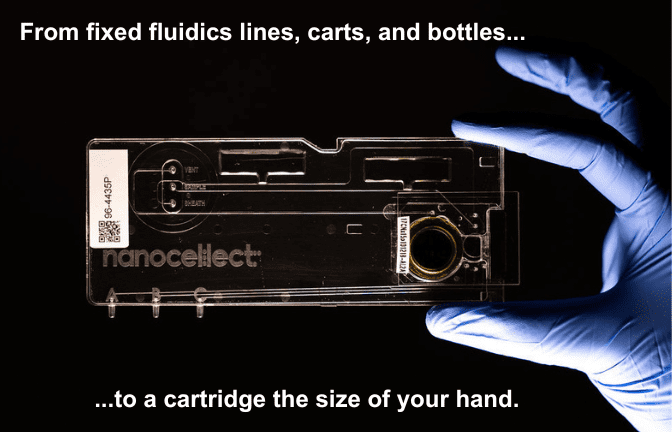
Picture this…
You arrive at the lab on Monday morning. You’re planning to run a sample of tumor microenvironment cells today so you can use them for downstream single-cell genomics analysis. You walk up to your WOLF G2 Cell Sorter and press the start button. While the instrument warms up, you grab a cup of coffee to warm yourself up. With no fluidics carts or lines to worry about, you grab a fresh microfluidic cartridge, get situated at the bench with no special hoods or tables needed, and you’re ready to start. Your sorted cells are happy with high viability and ready for research discoveries.
The NanoCellect microfluidic cartridge is an innovative technology designed to solve challenges with sterility, maintain the highest viability sorting possible, and provide a more simplified alternative to traditional cell sorters.
Curious about real-life examples? Check out our scientific publications page, where the WOLF or WOLF G2 was used across many different application types, or contact us for more information.
